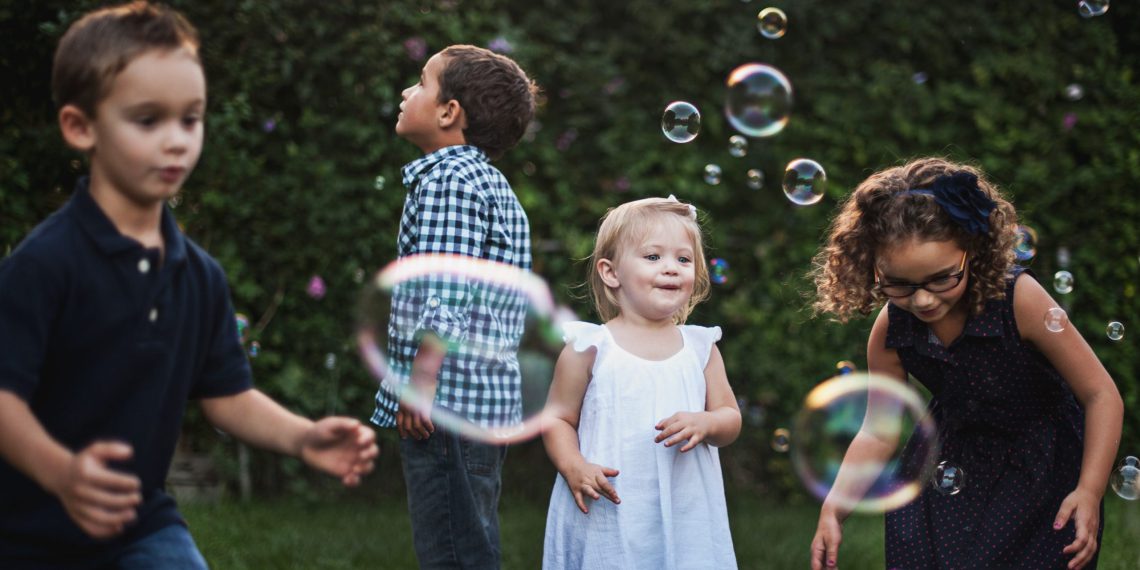Children are also infected with the new coronavirus SARS-CoV‑2, but have a very low risk of contracting COVID-19 compared to adults. A team of scientists from the Berlin Institute of Health at the Charité (BIH), the Charité ‑Universitätsmedizin Berlin, the University Hospital in Leipzig and the German Cancer Research Center (DKFZ) in Heidelberg used single cell analyses to find the cause of this.
They were able to show that the child’s immune system is much more active in the upper respiratory tract than in adults and thus better equipped to fight the virus. The researchers have now published their findings in the journal Nature Biotechnology.
It has long been speculated why children are significantly less likely to contract COVID-19 than adults, even though they are exposed to the same risk of infection. Apparently, children are better able to control infection, but the exact molecular mechanisms for this were previously unknown.
“We wanted to understand why viral defense seems to work so much better in children than in adults.”
- Professor Irina Lehmann, head of the Molecular Epidemiology Unit at BIH
Since the beginning of the pandemic, the BIH team led by Irina Lehmann and Roland Eils, director of the Center for Digital Health at BIH, has been tracking COVID-19 disease mechanisms. Based on single cell analyses from the nasopharynx of adults, the BIH researchers have identified the cells and signaling pathways involved in severe disease progression and, based on this, have initiated a clinical trial to test a new therapy for severely ill patients.
Currently, however, children are increasingly becoming the focus of interest, as they are not yet protected by vaccinations. However, the course of infection in children is usually much milder than in adults. “We therefore wanted to perform comparative single-cell analyses in children and adults to learn from this how protection against COVID-19 can work,” says Roland Eils.
Single cell analyses in the airways
For these studies, the team led by Professor Marcus Mall, director of the Department of Pediatrics with a focus on pneumology, immunology and intensive care medicine at Charité, had collected samples from the nasal mucosa of healthy children and adults infected with SARS-CoV‑2 and studied the disease progression. “Most of the infected children had only mild symptoms such as a cold or slightly elevated temperature, and the symptoms subsided after a few days,” explains Marcus Mall. In the samples obtained from the pediatricians, the BIH researchers performed single-cell transcriptome analyses, i.e. they examined which genes were read in which cells and how frequently. In total, 268,745 cells from 42 children and 44 adults were analyzed for this study.
Prepared for the fight against SARS-CoV‑2
Comparison of the cells obtained from the children and adults revealed a surprising result. The immune and epithelial cells of the nasal mucosa of healthy children were already on heightened alert and prepared for the fight against SARS-CoV‑2. For a rapid immune response against the virus, so-called pattern recognition receptors must be activated, which recognize the genetic material of the virus, the viral RNA, and initiate an interferon response. When SARS-CoV‑2 infects a cell, it normally overrides this early warning system, as a result of which this anti-viral response is usually rather weak and the virus can proliferate massively in the cell. However, in the infant cells studied, this pattern recognition system was much stronger than in adults, so that once the virus arrives in the cell, it can be quickly recognized and combated.
To prove that it is precisely this mechanism that leads to rapid elimination of SARS-CoV‑2 and protects the children, the BIH researchers collaborated with the team of Dr. Marco Binder, virologist at the German Cancer Research Center (DKFZ) in Heidelberg. The Heidelberg colleagues infected lung epithelial cells with SARS-CoV‑2 in the laboratory and were able to show that the presence of precisely those pattern recognition receptors that are more pronounced in the children determines whether infected cells can respond quickly enough to infection with the virus. As observed in these laboratory experiments, SARS-CoV‑2 infected children showed a significantly stronger interferon response than adults, especially during the first days of infection. This fits with previously published data from other studies indicating that children have a lower viral load and eliminate the virus more rapidly than adults.
Tracking down the protective factors
Pediatrician Marcus Mall concludes from the results: “This brings us a big step closer to understanding why children can control SARS-CoV‑2 infection so much better than adults.”
And the team led by Irina Lehmann and Roland Eils is already thinking about how to apply the results. Irina Lehmann says, “We learned from this study that there are obviously not only risk factors for severe COVID-19 courses, but also protective factors. From the knowledge of which pre-activations are helpful as protection against certain viruses, one could now also think about specifically inducing such an anti-viral response already before an infection and thus possibly protect at-risk patients from severe disease.”

















